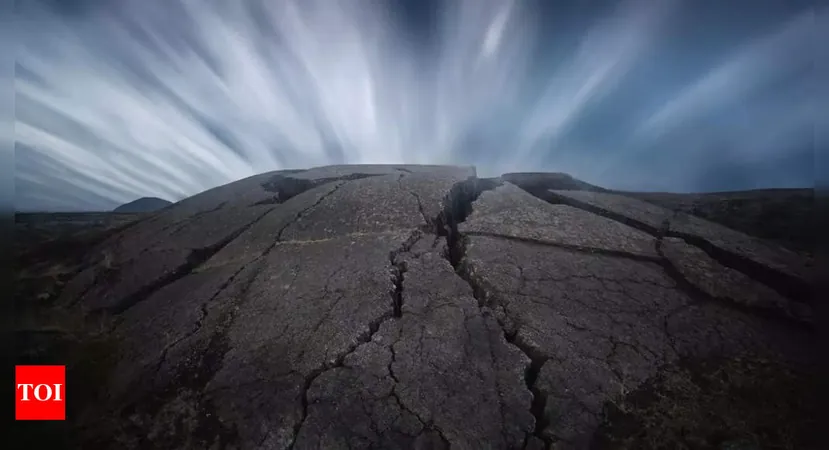
Hidden Treasures of Earth's History: Ancient Tectonic Plate Discovered in Borneo!
2024-09-22
Scientists have made an incredible discovery in Borneo, revealing evidence of an ancient tectonic plate known as Pontus, dating back a staggering 120 million years. This mysterious piece of Earth’s crust was thought to be lost after the break-up of the supercontinent Pangaea, leaving researchers eager to dig deeper into its origins and geological significance.
This groundbreaking find was spearheaded by graduate geologist Suzanna van de Langemaat and her supervisor, Douwe van Hinsbergen, both hailing from Utrecht University. Their meticulous analysis of rock formations led to this astonishing revelation, offering a glimpse into a time long forgotten.
Surprising Findings That Challenge Previous Beliefs
As Van de Langemaat explained, "Initially, we believed we were encountering remnants of a known tectonic plate. However, our magnetic lab research unveiled that these rocks had originated from much farther north, suggesting they were remnants of a different, previously unidentified plate." This unexpected twist has captured the attention of the scientific community.
A Deep Dive into the Junction Region
To uncover more about the Pontus plate, Van de Langemaat focused her research on the Junction region, a complex area of tectonic activity encompassing New Zealand, the Philippines, Borneo, and Japan. Her work aims to reconstruct the dynamic movements of tectonic plates over millions of years, offering tantalizing glimpses into the epochs of the dinosaurs and beyond.
Estimations of the Plate’s Size: A Colossal Discovery
Researchers have estimated that the Pontus plate was a significant segment of the Earth’s crust before Pangaea's fragmentation. Remarkably, it is believed to be about one-fourth the size of the Pacific Ocean! During its existence, a vast ocean separated Eurasia from Australia, with the Pontus plate lying beneath these waters. As Pangaea began to break apart, the Pontus plate was assimilated into the neighboring tectonic plates that now form parts of Borneo and the Philippines.
Borneo's Geographical Significance: A History Unveiled
Borneo, the world’s third-largest island and a crucial part of the Greater Sunda Islands, is shared among Indonesia, Malaysia, and Brunei. This discovery not only enhances our understanding of the geological history of Southeast Asia but also sheds light on how tectonic plates have shifted over countless millennia. As researchers continue to explore and analyze this new information, the implications for our understanding of Earth's geological past are deepening.
Stay tuned for more updates, as this discovery could have far-reaching consequences for our understanding of tectonic movements, ancient environments, and the evolution of our planet!





 Brasil (PT)
Brasil (PT)
 Canada (EN)
Canada (EN)
 Chile (ES)
Chile (ES)
 España (ES)
España (ES)
 France (FR)
France (FR)
 Hong Kong (EN)
Hong Kong (EN)
 Italia (IT)
Italia (IT)
 日本 (JA)
日本 (JA)
 Magyarország (HU)
Magyarország (HU)
 Norge (NO)
Norge (NO)
 Polska (PL)
Polska (PL)
 Schweiz (DE)
Schweiz (DE)
 Singapore (EN)
Singapore (EN)
 Sverige (SV)
Sverige (SV)
 Suomi (FI)
Suomi (FI)
 Türkiye (TR)
Türkiye (TR)